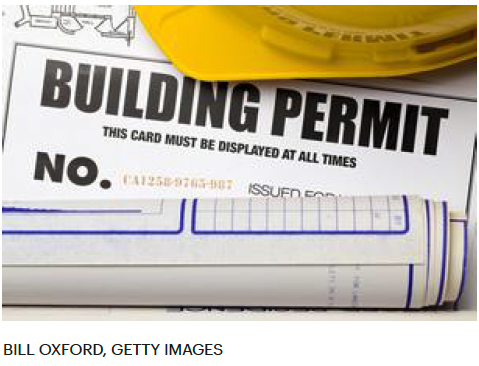By Gloria Lloyd, St. Louis Business Journal
No vote, for now.
That’s the new plan from the St. Louis Realtors, an association that last year said it found that the 17,000 pages of building codes across St. Louis County’s 89 local governments are “inconsistent, outdated and wastefully duplicative.” It had wanted voters to weigh in on the issue this fall, with an eye toward reform.
But the trade group has backed off a ballot measure, at least right now. Instead, it’s formed a coalition of 13 organizations and contractors’ groups that continue to analyze how the region can streamline the county’s many codebooks.
The coalition, Safer Simpler St. Louis County, will roll out a website soon to elaborate on the Realtors’ findings that as of last year, the county and its 88 municipalities use at least 42 building codebooks, adding up to 17,000 pages that pile on costs and time to projects. The Realtors originally suggested that voters could require that codes and inspections in cities in St. Louis County follow county code, rather than their own. That remains an option in the future, along with state legislation. The decision to slow down came after talks with municipal officials about how to voluntarily streamline codes.
Even with a deliberately slower approach, the coalition is one of the only efforts underway today to improve regional cooperation in St. Louis in the wake of the failed Better Together city-county merger campaign and the push for a Board of Freeholders, which stalled even before the pandemic, said Charles Hinderliter, director of government affairs for the Realtors. A representative of area cities has blamed St. Louis Mayor Tishaura Jones and St. Louis County Executive Sam Page for failing to provide clarity on whether a new Board of Freeholders, which could alter the city and county governments, should kick off. The city has begun discussions about whether to alter its governing document, called its charter, though the first time it could submit proposed changes to voters, under one plan, would be in August 2024 or November 2024.
“As we look around, we’re not seeing much in terms of real efforts to try to talk about or improve regional cooperation right now. It’s kind of surprising how quiet it is,” Hinderliter said. “When we looked in 2019 in the wake of Better Together, we were like, what else can we plug into? Where can we help? And we just weren’t seeing anything. And that’s how we ended up kicking something new off.”
The Municipal League of Metro St. Louis, which represents the county’s 88 municipalities, has opposed a ballot measure that would enshrine a common code, most likely St. Louis County’s, into the county charter.
But soon after the Realtors released the study, league members began studying the issue through a task force made up of mayors and city managers. After more than six months of meetings, the Building Codes Assessment Committee strongly encouraged cities in St. Louis County to voluntarily adopt the same building codes, while still allowing for individual differences.
The league’s executive board agreed with that non-binding recommendation, said Bridgeton Mayor Terry Briggs, who chaired the code committee. But cities want to keep their autonomy and accessibility to residents, which the league argues can further the aim of efficiency in government.
“Why would a resident in Eureka want to go to St. Louis County for an occupancy permit when right now they can go to their city hall?” said Municipal League Executive Director Pat Kelly. “If you’re talking about a system that is creating a variety of bureaucracy and inefficiency, municipalities really help with some of these things.”
The Municipal League in early July sent a letter to County Executive Sam Page asking to expand the county’s Building Code Review Committee from five to seven members, adding two representatives of cities that contract with St. Louis County for code enforcement, Briggs said.
Contractors who work day-to-day with varying codes told the committee about the challenges they find moving between cities, Briggs said. That challenge appears to be unique to this region and could rise to the level of affecting future growth, according to Xavier Gassier, the chief operating officer of the Plumbing Industry Council, which joined the Realtors coalition, along with electrical contractors.
Gassier came to that conclusion after talking with colleagues in the plumbing industry nationwide and across the state. Contractors in Kansas City, a region that in recent years has seen more growth than St. Louis, told Gassier that they don’t have to spend as much time and money navigating various codes.
“If you’re going to go into one of these municipalities that has a slightly different playbook, that’s a hurdle if you’re starting out as a new company,” Gassier said. “It seems innocuous, but it’s a lot of overhead to maintain. What are the differences? It’s not uncommon for a contractor to go, ‘Oh man, I just finished this job and I didn’t realize I was one street over, proverbially speaking. And now I have to go back in with new materials, new labor, and then either absorb that cost or pass it on to the consumer.’ But it’s not adding value anywhere into the process other than just meeting a requirement.”
Permitting goes regional
A regional initiative to streamline St. Louis County’s permitting process through online software should soon hit a milestone 10 years in the making.
After a decade of work and years of setbacks, the St. Louis County Regional Permitting Collaborative hopes to see its new electronic permitting portal go live on the county website by the end of this year.
The collaborative began with a simple idea, said its chair, Charles Hinderliter, director of government affairs for the trade group St. Louis Realtors: “How do we make it simpler to do business?” The Municipal League of Metropolitan St. Louis and Associated General Contractors have been major supporters.
A long-term goal is that permit applications to every city and fire district in the county could be collected into one easily accessible online location, but that had to start with the largest government involved, St. Louis County. The immediate hope now is to prove that St. Louis County’s permitting process for project owners, developers, contractors and architects can run smoother. Eventually, other agencies such as the Metropolitan St. Louis Sewer District or individual municipalities could join the online system, making it easier for businesses to get any type of permit with a one-stop shop.
Thirteen members of the Safer Simpler St. Louis County coalition
Associated Builders and Contractors, Heart of America Chapter
American Institute of Architects St. Louis Chapter (AIA St. Louis)
Associated General Contractors of Missouri (AGCMO)
Building Owners & Managers Association of Metropolitan St. Louis
Missouri Association of Plumbing, Heating, Cooling Contractors
Missouri Growth Association
National Electrical Contractors Association St. Louis Chapter
Plumbing Industry Council
Society of Industrial and Office Realtors, St. Louis Chapter
St. Louis Apartment Association
St. Louis Realtors
Urban Land Institute – St. Louis
U.S. Green Building Council – Missouri Gateway Chapter

